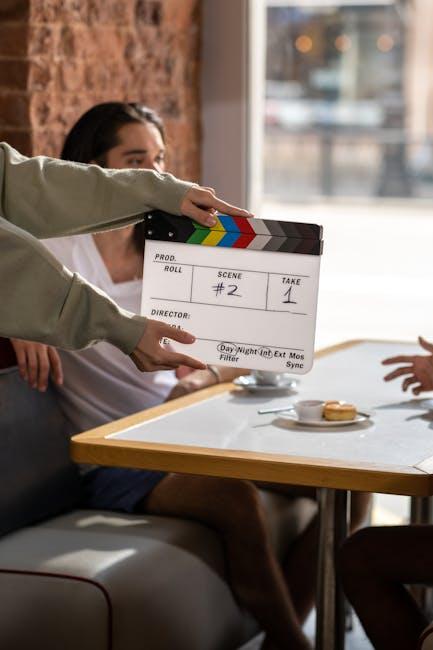In recent years, Hollywood has made significant strides toward diversifying its on-screen representations, sparking a dynamic conversation about the impact of these efforts on artistic decision-making. As the industry grapples with the need for inclusivity, questions arise about how this focus on diversity influences casting choices, narrative development, and creative freedom. This article delves into the complex interplay between the pursuit of representation and the integrity of artistic vision, examining whether Hollywood’s commitment to diversity enhances or constrains the storytelling process. By analyzing industry trends, stakeholder perspectives, and case studies, we aim to uncover the nuanced realities behind this pivotal shift in entertainment.
Evaluating Diversity: Artistic Integrity or Compromise
In the current landscape, Hollywood’s emphasis on diversity in casting has sparked a vigorous debate regarding the balance between artistic integrity and perceived compromise. Some argue that this focus enhances storytelling by reflecting the multifaceted reality of our world. When diversity is integrated thoughtfully, it can enrich narratives and offer fresh perspectives that resonate with a broader audience. This approach often challenges stereotypes and fosters inclusivity, allowing for more authentic character development.
- Expanded Narratives: Diverse casting can introduce unique cultural elements that deepen the plot.
- Broader Appeal: Stories resonate with a wider audience, increasing engagement and box office success.
- Authenticity: Real-world representation enhances credibility and relatability.
Conversely, there are concerns that an overemphasis on diversity might lead to tokenism, potentially diluting the creative vision. Critics suggest that in some cases, the pressure to conform to diversity standards might overshadow the artistic choices traditionally driven by narrative needs. The challenge lies in ensuring that diversity serves the story organically rather than becoming a box-ticking exercise, which can sometimes lead to forced or inauthentic portrayals.
Analyzing Casting Trends: Diversity vs. Meritocracy
In recent years, Hollywood has seen a significant shift in casting practices, with an increased emphasis on diversity. This focus aims to reflect the rich tapestry of society, offering roles to actors from various backgrounds. However, some critics argue that this trend might compromise the industry’s long-standing commitment to meritocracy. They question whether the push for inclusivity is overshadowing the importance of selecting the best talent for a role, regardless of their background.
- Authentic Representation: Advocates of diverse casting argue that it provides a more authentic representation of the world, offering audiences a chance to see themselves reflected on screen.
- Talent Pool Expansion: By broadening the scope of casting, Hollywood taps into a wider array of talent, potentially discovering actors who might have been overlooked under traditional casting norms.
- Artistic Integrity: Critics, however, worry that prioritizing diversity could lead to a compromise in artistic integrity, where roles are filled based on demographic criteria rather than suitability or skill.
While the debate continues, it’s clear that the conversation around casting is evolving, challenging the industry to find a balance that honors both diversity and the core principles of artistic excellence.

Balancing Representation: Creative Vision and Social Responsibility
In the evolving landscape of Hollywood, the push for diversity in casting presents a complex interplay between creative vision and social responsibility. Filmmakers often grapple with the challenge of staying true to their artistic intentions while also reflecting the diverse world we live in. This balancing act can be seen as both a constraint and a catalyst for innovation. On one hand, directors may feel that casting choices are constrained by the need to meet diversity quotas, potentially impacting the authenticity of their narrative vision. On the other hand, embracing diverse perspectives can enrich storytelling, offering fresh and compelling narratives that resonate with a broader audience.
- Authenticity vs. Representation: Is it possible to remain true to a story’s essence while ensuring inclusive representation?
- Innovation through Diversity: How can diverse casting drive creative breakthroughs in storytelling?
- Audience Expectations: Does the audience prioritize authentic representation over traditional casting norms?
Ultimately, the focus on diversity in casting challenges Hollywood to rethink traditional paradigms and explore narratives that are both inclusive and artistically fulfilling. As filmmakers navigate this terrain, the dialogue between artistic freedom and social responsibility continues to evolve, shaping the future of cinema.

Strategic Recommendations: Enhancing Diversity without Sacrificing Artistry
In the pursuit of a more inclusive Hollywood, it is crucial to adopt strategies that enrich both diversity and artistic expression. Casting decisions should prioritize authentic storytelling by ensuring that roles reflect the genuine experiences and backgrounds of characters. This can be achieved by collaborating with writers and directors from diverse backgrounds who bring unique perspectives and narratives.
Moreover, fostering a culture of open dialogue within production teams can enhance understanding and lead to more nuanced portrayals. Consider implementing the following strategies:
- Workshops and Training: Regular sessions for cast and crew to explore cultural nuances and avoid stereotypes.
- Inclusive Talent Pools: Expand casting calls to include a wider range of communities and lesser-known talent.
- Mentorship Programs: Develop initiatives that support emerging artists from diverse backgrounds to gain industry experience.
These approaches not only promote diversity but also elevate the artistry, ensuring that films resonate on a deeper, more authentic level with audiences worldwide.

